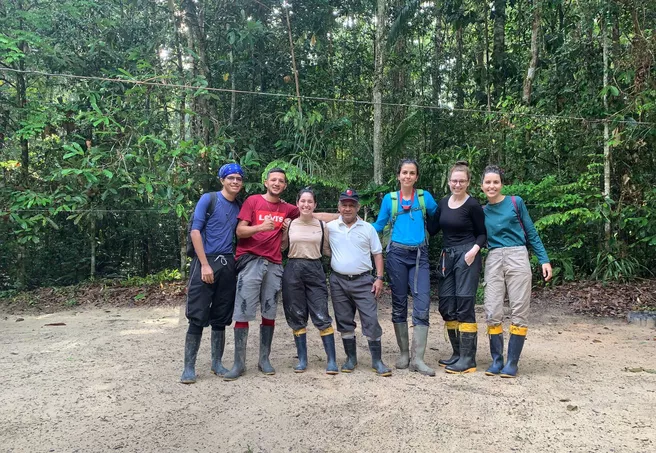As part of the Amazon-FLUX project, we travelled to the heart of the Amazon forest, near Manaus, Brazil (Figure 1, Figure 2) during the month of June and July 2022 aiming to investigate the importance of compounds released by fine roots in supporting forest functioning in areas with low soil fertility. These so-called organic acids, among others functions, can free molecules of phosphorus in the soil, an important and scarce nutrient in Central Amazonia. Such strategy, however, comes at a cost, since plants need to invest their own carbon to produce such compounds. In a world with changing climate, the importance of organic acids could increase in order to sustain forest growth.
To sample those compounds, we had to incubate roots in the field, in a way to simulate the soil volume in a controlled and sterile environment (Figure 3, Figure 4). Not an easy task in a super clayey soil, while enduring the presence of mosquitos, ticks and an eventual thunderstorm or two. After 8 days of field campaign, we sampled 8 plots, being half with forests growing in natural soil and half in plots fertilised with phosphorus, to determine, by difference, if the alleviation of phosphorus limitation could change the exudation of organic acids.
Despite of the challenges, the campaign was successful and as always, the luxurious Amazon rainforest (Figure 5, Figure 6) gifted us with incredible encounters with some animals (Figure 7, Figure 8), amazing plants and their shapes and colours (Figure 9, Figure 10), but also the incredible people that made this work happen (Figure 11, Figure 12).
(Photos by Tatiana Reichert)
